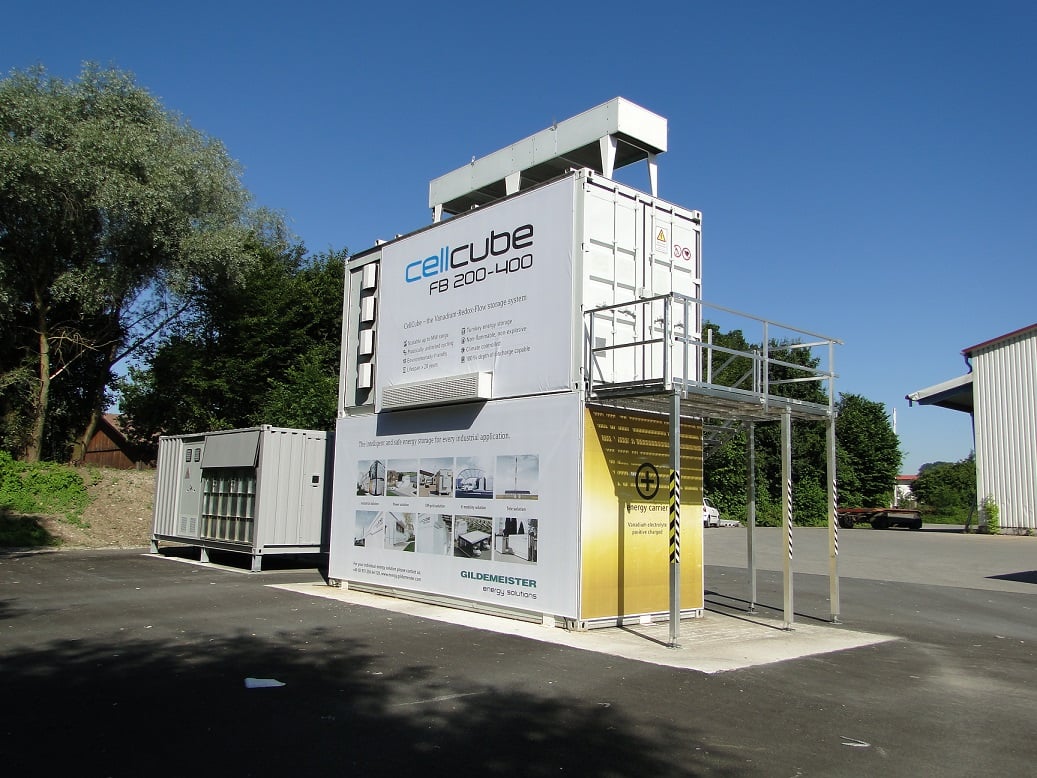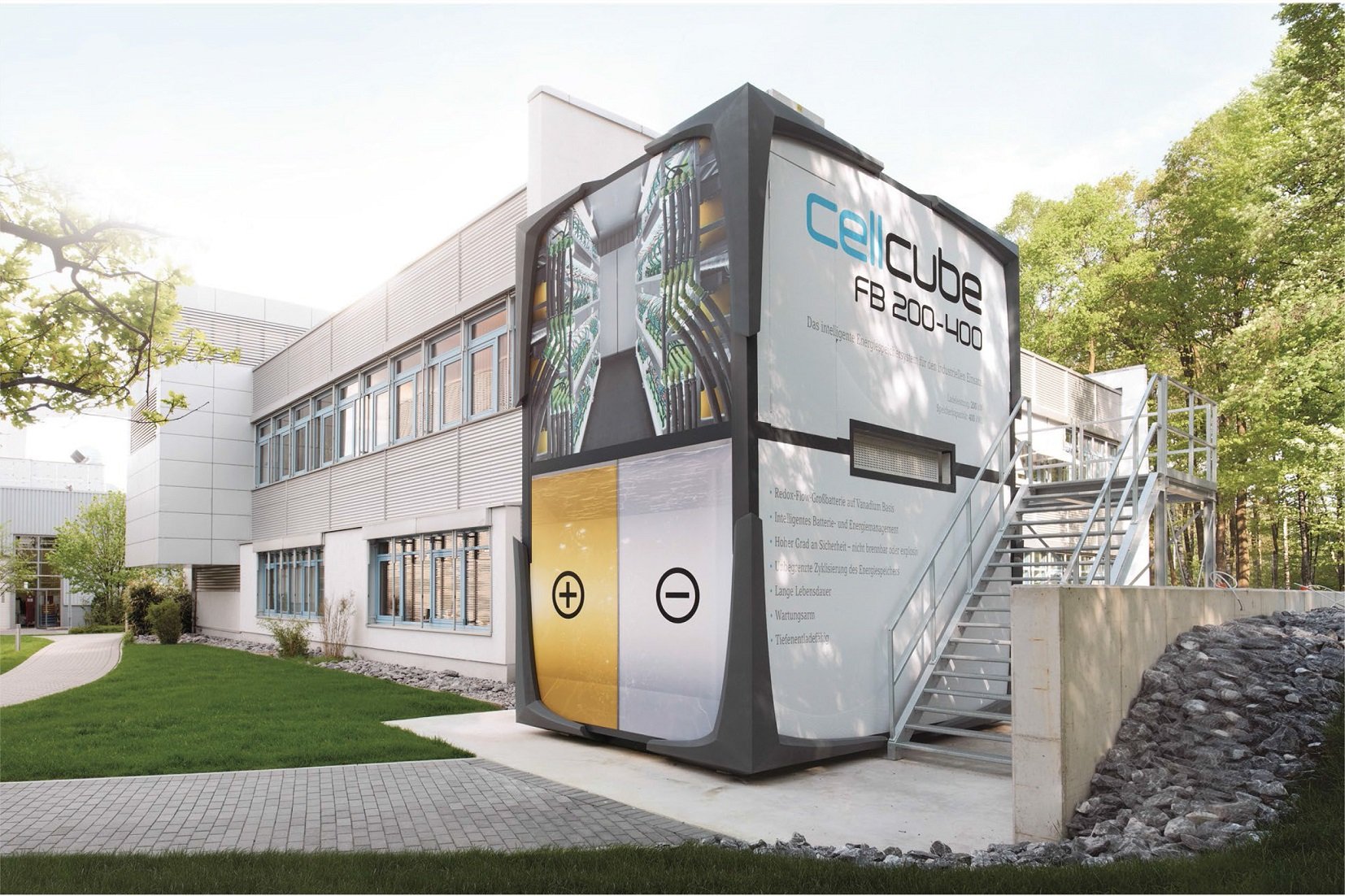
The fortunes of Gildemeister’s redox flow battery energy storage have been an interesting mirror to those of the technology class overall in some ways. One of the most talked-about flow energy storage providers during the 2010s before a wave of consolidation shook out the industry, the assets developed by DMG Mori that became Gildemeister Energy Storage were almost sold in 2016 to American Vanadium, an upstart company with ambitions to vertically integrate with mining operations in the Nevada Desert.
It was then taken over by junior mining entity Stina Resources, putting it in the hands of subsidiary Enerox and rebranded as CellCube – the name Gildemeister had given the vanadium redox flow storage units – the dream of vertical integration is once again alive, as Energy-Storage.news heard from CellCube Energy Storage company president, Stefan Schauss.
Enjoy 12 months of exclusive analysis
- Regular insight and analysis of the industry’s biggest developments
- In-depth interviews with the industry’s leading figures
- Annual digital subscription to the PV Tech Power journal
- Discounts on Solar Media’s portfolio of events, in-person and virtual
Or continue reading this article for free
A few days ago we reported Schauss’ view that some of the longer duration lithium projects coming online in regions such as California represent merely the ‘tip of the iceberg’ of peaking capacity that can be provided by a combination of energy storage and renewable energy. Here are Schauss’ views on some other current topics and insights into CellCube’s history and strategies.
There’s a fair bit of background to CellCube, some of which Energy-Storage.news has covered in the past. How have you come to be involved (Schauss was appointed in June) and what are some key milestones in the evolution of CellCube to date?
I come from a semi-conductor industry background. I joined the company before it was Gildemeister about a decade ago. We have installed over 130 projects in a diverse field. DMG Mori decided to sell the business due to the fact that Mori has a core business in machine tools. Their paradigm was always that “we will fund the operations but you have to start and grow yourself”.
Now people are saying, “Ok, we have long duration energy storage projects, which technology are we using? Are we doing this with lithium or are we looking at other more-or-less proven technologies that are better in the economics for this long duration storage system area?”
Fast forward to 2016, the company then said “we understand you guys need to grow, we need to get an outside investor in.” Since DMG Mori is not a company which takes a minority ownership or retains a stake, they wanted to find a good new home. Lo and behold, 2016 ended and the chairman got a little bit nervous and said “either one of our three potential investors comes to the table by 31 December 2016 or unfortunately we have to pull the plug”.
It was a rather crooked business that they found, without due diligence, and they promised to fund it but nobody did. So it was a complete disaster, the company went into insolvency proceedings or receivership in September 2017 – that’s how long the cash lasted. Out of this, a vanadium junior mining company from Canada picked up and was fast enough to get the assets from these Gildemeister proceedings and we were able to retain our core team of 30 people to basically be operational.
There seems to be a difference between flow energy storage providers that see vertical integration as key and others that prefer to outsource manufacturing as a long term strategy. What’s CellCube’s approach?
We have a vanadium mine – or a vanadium deposit – in Nevada which is fantastic for making purity-grade vanadium as the ‘juice’ inside the battery systems. Together with that, we moved along to purchase a switchgear company.
With these units now we have a full vertical integration to deliver these turnkey energy storage systems. We have everything – we have the flow batteries; under Gildemeister we always integrated the inverter technology and the PCS into it.
We also took a stake in a financing house called Braggawatt. It has come out of SunEdison’s spin-off and it’s a platform [e-commerce platform for onsite energy solutions with renewables]. That is great because it opens up a market, it provides easy financing. It’s a full conversion on Braggawatt’s side towards a PPA agreement.
Is the vanadium deposit up and running already?
I wouldn’t consider it up and running yet but we have just in spring started extracting the first trucks full of material, this is now being processed and analysed. So we’re in the midst of that, looking at what we really have there, impurities and such, what needs to be filtered and what the best process is to do in-house processing into electrolyte.
We’re also drilling on the site in the near future to see what the magnitude is. There have been some historical evaluations and that has been showing round about a gigawatt-hour of materials for flow batteries every year, for a minimum of two decades. That gives us enough material to get started.

The biggest waves in flow energy storage appear to be being made in China, with several projects announced, each of hundreds of megawatts, to be developed over the next few years. What’s your opinion on that?
China is a little bit difficult at this moment. You might have heard or seen, on the vanadium offtake side, vanadium demand for construction steel has always been 95% to 98% of the market. China has just announced that one third more vanadium needs to be processed in the steel that they’re using for construction. When you look at vanadium market pricing, it’s moving up dramatically. That is theoretically not good for vanadium flow batteries because it makes that stuff more expensive. By owning the deposit and in the near future making electrolyte out of this, we’re basically decoupled from that.
We see the first four-hour lithium projects now and a few years ago people probably wouldn’t have foreseen those. Are we coming to the upper limit of what lithium can do?
Yes. We are already quoting six and eight hour durations [to our customers]. [Here’s] one data point: on an eight-hour storage duration system we’re at the price point of US$200 per kWh. Not battery, not cell, no fancy announcement on the battery cell level, but for system-level containerised energy storage: US$200. That of course is a different ballgame now. That’s why you see the interest working up really.
CellCube just entered a financing facility with Ontario Alumina Partners. What’s behind that deal?
Basically we have gone on an acquisition spree, and at the same time what we’re surprised with is the uptick that we are getting from the customer base in solidifying projects and really, we’re looking at a hot autumn for projects. What Alumina in this situation does is provide some more working capital.
We’re still starting out so we need to churn more and this working capital is an easy way for us to draw upon whenever we need to. The reason why we’ve chosen to do so is to bridge a gap – we will be going out for a large funding round because when we look at our project pipeline we have more than 25 large projects and these are things like 50MW / six hours (300MWh) so we need to come to grips with that. We will be going for a larger round of financing to provide a much larger working capital but for 2018 and early 2019 – that is, not necessarily right away – it allows us to scale or pre-scale operations and get us into full swing, including the necessary resources in order to deliver projects in that size.
